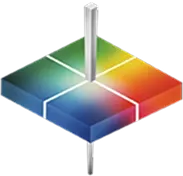
The European Pharmacopoeia color scale was developed to facilitate communication regarding the color of liquid pharmaceuticals. Image Source: Pexels user bogitw
Imagine trying to describe the color of a light yellow liquid to someone across the world. What words do you use? How do you communicate the exact qualities of this particular shade? How do you describe the degree to which it differs from another, similar but distinctly different color? These are questions faced by multiple industries across the globe and specialized color indexes, such as the APHA and Gardner scales, have been developed to allow us to more easily categorize hues and share color information. Within the pharmaceutical industry, one of the most commonly used color indexes is the European Pharmacopoeia (EP) color scale, which was created to harmonize liquid pharmaceutical classification and facilitate communication within the industry.1 Using a range of 37 discrete colors produced via specific combinations and dilutions of three primary color solutions, the EP scale allows industry professionals to move away from vague and imprecise descriptors to a more consistent, uniform way of identifying color quality in APIs, excipients, and any other liquid pharmaceutical products or components.
However, determining EP scale placement has traditionally relied on visual matching of a sample to a standard within the series. This process has several major points of vulnerability:
- Colors may vary between EP standard batches due to imprecise formulation or material degradation.
- Near-clear samples are often extremely difficult to match.
- Matching requires a relatively large sample volume.
- Matching relies on subjective visual assessment, which may be negatively affected by a host of factors, including viewing environment and observer color vision deficits.
As such, visual color matching with EP scale standards presents major risks to accurate and consistent color assessment and compromises the ability to make meaningful use of the scale. Quantitative color assessment using spectrophotometric technology allows you to overcome these limits, produce accurate, repeatable color classification, and harness the full potential of the EP color scale.

Spectrophotometric EP color classification allows for the assessment of even small liquid samples. Image Source: Unsplash user Nithya Ramanujam


